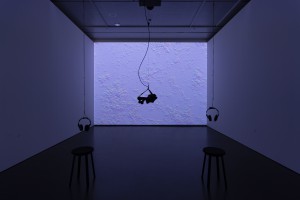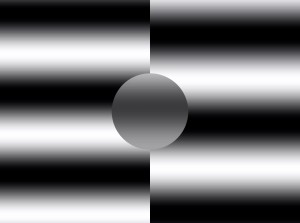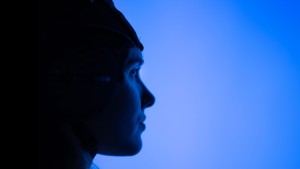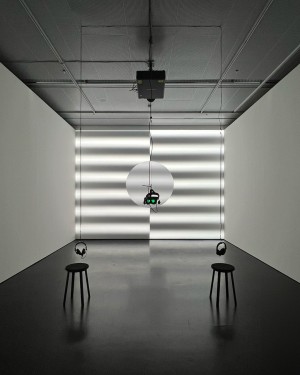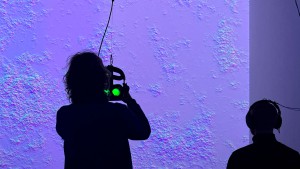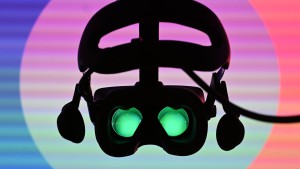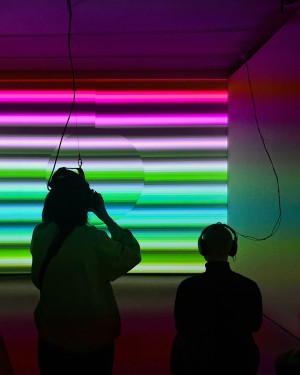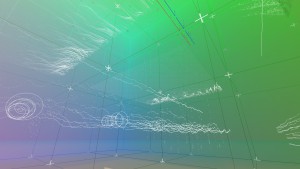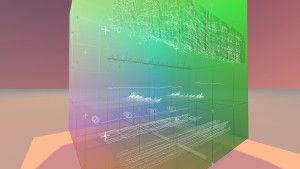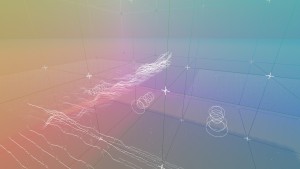- Audio-Visual Installation
ATELIER-E
Audio-visual stimuli dedicated to the neurons and synapses in our brains
AUTOPOIESIS
How would an installation look like that is not meant for humans but for their brains? Trespassing landscapes of activation and deceleration – an experience that is barely, if at all, interpretable. Undulating between reception, perception, and interpretation, this mediatic installation investigates neuro-physiological impacts of audio-visual stimuli.
NEUROSCIENCE IN/FOR DESIGN
AUTOPOIESIS, developed by ATELIER-E in collaboration with the neuroscientific department of Fraunhofer IAO Stuttgart, is an immersive audiovisual installation designed to stimulate the human brain beyond conscious perception. Headphones floating from above deliver synchronized binaural soundscapes matched to high-frequency visual projections, exploring how colors, shapes, and sounds influence neurophysiological processes and enhance interhemispheric connectivity. At the center, a VR headset visualizes EEG data recorded from participants of the accompanying lab study, enabling direct engagement with subconscious neural responses. Transforming an ordinary sterile lab into a poetic, technologically-driven landscape oscillating between mental activation and calm deceleration, the installation invites visitors to experience the intricate and often hidden interplay of sensory stimuli within their own neural pathways. The work shifts the focus of installation art from human-centered interpretation to direct neural engagement. By combining synchronized audiovisual stimuli with real-time EEG data visualized in a VR headset, the project merges artistic intuition with neuroscientific precision into a uniquely embodied experience. It transforms scientific data into immersive spatial poetry and invites a new form of interaction—where visitors do not merely observe, but physiologically participate. The work approaches art as a space of embodied cognition rather than subjective interpretation. It is not meant to be decoded, but experienced physiologically. By applying neuroscientific parameters such as frequency, rhythm, and spatial stimulation, the artistic process becomes a sensory composition. Using computational tools, we imagined an audiovisual environment that activates the brain directly—bypassing symbolic meaning in favor of neural engagement.
The artistic research project AUTOPOIESIS is realized in collaboration with Fraunhofer Institute for Industrial Engineering IAO, IAT of the University of Stuttgart and the media artists of ATELIER-E. Produced in cooperation with the ZKM | Center for Art and Media Karlsruhe.
epileptic trigger warning: flickering imagery
STUDY DESIGN
As a studio, we combine code and precision within aesthetic environments. For this particular project, we developed a custom Python adaptation of the Lab Streaming Layer protocol to connect our computational designs in Max/MSP and TouchDesigner directly to dedicated lab environments used in EEG research. The work is grounded in current neuroscientific research conducted by Fraunhofer IAO. The project builds on studies investigating how specific audiovisual stimuli—such as light patterns, geometric forms, and binaural beats between 10–40 Hz—affect attention, cognitive performance, and interhemispheric brain connectivity. At the core of the ongoing Fraunhofer lab study was the detection of neural responses generating binaural beat difference frequencies in the brain.
The video above shows a study example of high-frequency visuals created in TouchDesigner and projected via a 120Hz projector, sample-accurately synchronized with binaural audio produced in Max/MSP.
VR EXPLORATION
The installation directly translates scientific findings into sensory experience. The audiovisual stimuli used are based on parameters developed in the laboratory setting and are synchronized with real-time EEG data collection. AUTOPOIESIS thus functions as both an artistic expression and a performative extension of the research, allowing visitors to engage with the scientific process through embodied interaction and neural feedback in VR.
Each eeg-measurement-electrode represents a data point in a multi-dimensional space. They are the perfect entry point for machine-learning-based pattern-recognition systems. The exploration of the data in a VR headset allows visitors to discover our analysis derived from recorded eeg-data of participants during their stimulation test. Having the chance to work with human brain signals taught us to embrace complexity and the inherent challenges of neurodata. Over time, we discovered the value and aesthetic potential of machine learning in interpreting multimodal latent spaces derived from EEG input—insights that directly informed both the structure and the future direction of this work.
Credits
- ATELIER-E Assistance
Aaron Schwerdtfeger, Hannah Machajdik
- Curation
Dr. Anett Holzheid, Sarah Donderer, Nina Liechti, Beatrice Zaidenberg
- Neuroscientific consulting
Ravi Kanth Kosuru, Dr. Mathias Vukelic
- Photos
ATELIER-E, ZKM Karlsruhe

